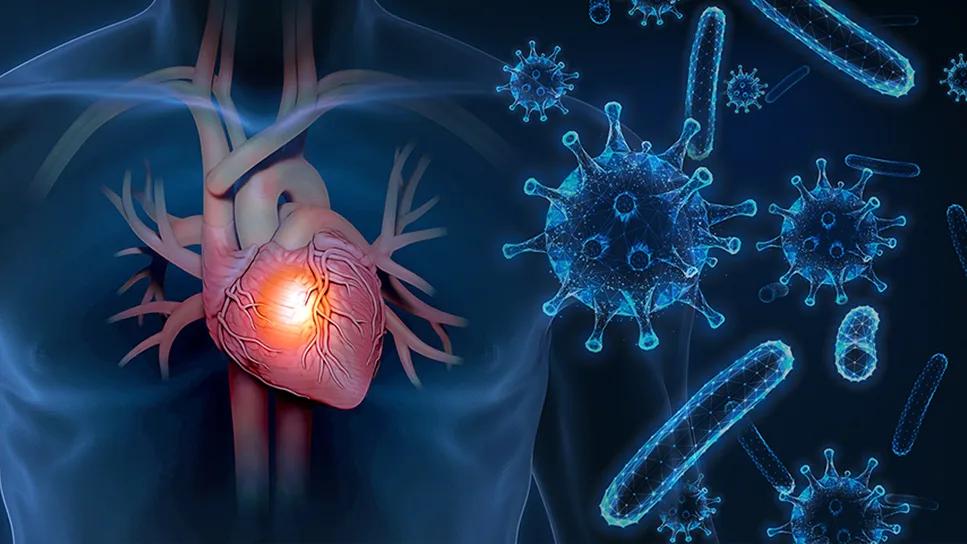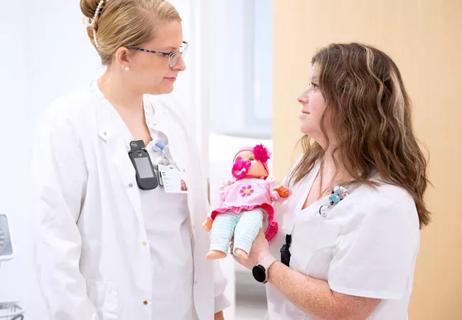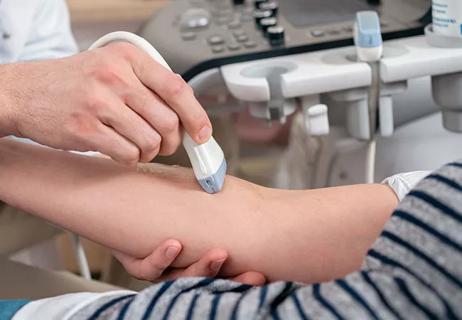Patient education and peer support are key components

Intravenous drug users are one population prone to acquiring infective endocarditis (IE), which occurs when bacteria enters the blood stream destroying tissue and creating growths and holes on the heart valves, and often requires surgery to repair or replace the diseased valve. The Journal of the American Heart Association says 10% of hospitalized patients nationwide with IE have a substance use disorder (SUD). This corresponds to more than 90,000 hospital admissions annually, and in recent years, Cleveland Clinic’s Endocarditis Center has seen a growing number of these patients. Many are patients who require repeat procedures when they continue to use.
Advertisement
Cleveland Clinic is a non-profit academic medical center. Advertising on our site helps support our mission. We do not endorse non-Cleveland Clinic products or services. Policy
A little over a year ago, the Heart, Vascular and Thoracic Institute Endocarditis Center care team (including nursing, cardiothoracic surgery, cardiology, infectious disease, behavioral health and care management) decided that it was time to be more proactive in addressing the national epidemic of opioid use disorder (OUD) and its impact on IE patients. The Center’s multidisciplinary team created MOSAIC, a holistic program that features patient care management strategies, education, support, art and music therapies, and outreach to build on the current medical-surgical management of IE patients. The team created a MOSAIC binder to educate patients and their families about the IE-SUD connection and provide resources on recovery.
“These patients can do so much damage to their hearts, and as clinicians we wanted to assist them with their recovery from addiction, as well as their recovery from heart disease and surgery. We wanted to provide them with every possible resource, but we are not experts on the treatment of opioid abuse,” says Senior Nursing Director Mary McLaughlin Davis, DNP, ACNS-BC, CCM. “So, we kept asking ourselves how we could do a better job at keeping these patients from reusing opioids and ending up back in the hospital for another procedure, or worse, losing their life.”
“These patients spend an average of three weeks in the hospital as they are treated for their valve disease and infection, evaluated and/or undergo surgery, initially recuperate and begin an antibiotic regimen,” says Betsy Stovsky, MSN, RN, Manager of the Heart, Heart Vascular & Thoracic Institute Resource and Information Center and coordinator of the MOSAIC program. “We saw this an opportune time to support these patients and get them on a path to sobriety.”
Advertisement
The team set out to identify a robust peer support program that could provide a unique kind of support for SUD patients and guide them into a sober living environment or long-term drug rehabilitation program. What they found was SOAR, a local peer support program that was already being called in 24/7 to work with OUD patients in the emergency departments at two Cleveland Clinic regional hospitals.
SOAR, which stands for supporting opiate addiction recovery, was formed in recent years as a collaborative community response to the opiate crisis in Cleveland. This state-funded program is staffed by eight certified peer supporters who are lay people with a history of drug addiction. They have an average of four years of recovery experience, and each one has gone through a rigorous training program, background checks and is required to have 30 hours of continuing education credits every year. With this deep understanding of addiction, their goal is to connect with OUD patients and get them enrolled in a drug rehabilitation program. Funding comes from Ohio’s State Opioid Response Fund, which is managed by the Ohio Mental Health and Addiction Services (OHMAS) as part of the Substance Abuse and Mental Health Services Administration (SAMHSA)
In 2019, nurses in the Heart, Vascular and Thoracic Institute worked with Care Management to create a workflow that would identify IE-OUD patients. Once identified, the care management team talks with these patients about meeting with a peer supporter. Once a patient agrees to meet with a peer support person, the nurses then facilitate a meeting and regular peer support visits while they are in the hospital. The program was introduced at the Endocarditis Center in late 2019, and to date, SOAR has worked with about 80 OUD patients.
Advertisement
“Since we started working with the Endocarditis Center, we have had fantastic connections with these patients,” says Erin Helms, director of the Woodrow Wilson Project, which runs the SOAR program. “We come into the hospital to talk to patients about their options, and we work on finding a detox program first. There are medication-assisted treatment programs and intensive inpatient or outpatient programs. We work to find the best solution for each patient based on their needs and resources. We connect these patients with a facility and follow up with patients as needed.”
In March, the coronavirus pandemic slowed down SOAR peer support visitations to the Center, but Davis says they have continued the program by facilitating virtual peer support for interested patients via phone or nursing unit iPads. Working with SOAR, the nurses also set up an online recovery support group led by a peer supporter that takes place on Saturdays for hospitalized OUD patients who want to watch. Patients who have been discharged, but recovering in local skilled nursing facilities continue contact with SOAR and can participate in the weekend virtual meetings.
A secondary benefit of SOAR is the education of our nursing and advanced provider teams about the power of peer support. Kayla Little, MSN, APRN, AGCNS-BC, PCCN, CHFN, Clinical Nurse Specialist created classes about substance use disorder, based on learning needs assessments of caregivers. SOAR provided insight into what patients with SUD go through when seeking recovery. Classes are stored in MyLearning for caregivers to review on their own time.
Advertisement
McLaughlin Davis relays a successful case study with the help of SOAR: A 28-year-old woman with OUD from out of state had been an inpatient in the Endocarditis Center for more than a month because she needed to stay on antibiotics and had nowhere to go.
“At the beginning she was resistant to help and always agitated,” says McLaughlin Davis. “Her nurse and case management and her peer supporter all worked with her to try to find housing and convince her to seek treatment. Finally, the woman’s mother agreed to help, and the patient committed to seeking an outpatient rehab program. The day she was discharged from the hospital, the nurses gave her a going-away cake, and Social Work made sure she got a cab to the bus station. Once there, her SOAR peer support person met her and made sure she got on the bus home.
“By the time she left the Center, she was hugging people [pre-COVID-19] and grateful for the help. And there was a lot of emailing going on between all of us at the Center throughout the day because we were all committed to getting her where she needed to go,” says McLaughlin Davis.
She adds: “SOAR has truly been a blessing. Our team – from nursing to our cardiac surgeons—are dedicated to getting these patients on a healthy path to sobriety.”
Advertisement
Advertisement

New study seeks to uncover the moderating effect of stress

Overestimation of pain can escalate treatment, but underestimation can have other unintended consequences

Study highlights the benefits of clear, concise messaging

How nurses can effect change through professional writing

Fellow critical care nurses welcome additional support and expertise

Pilot study confirms feasibility of conducting additional research on the novel treatment

Study shows ultrasound can be valuable tool for improving patient satisfaction by reducing failed IV insertions

New system uses vital signs to predict need for further intervention